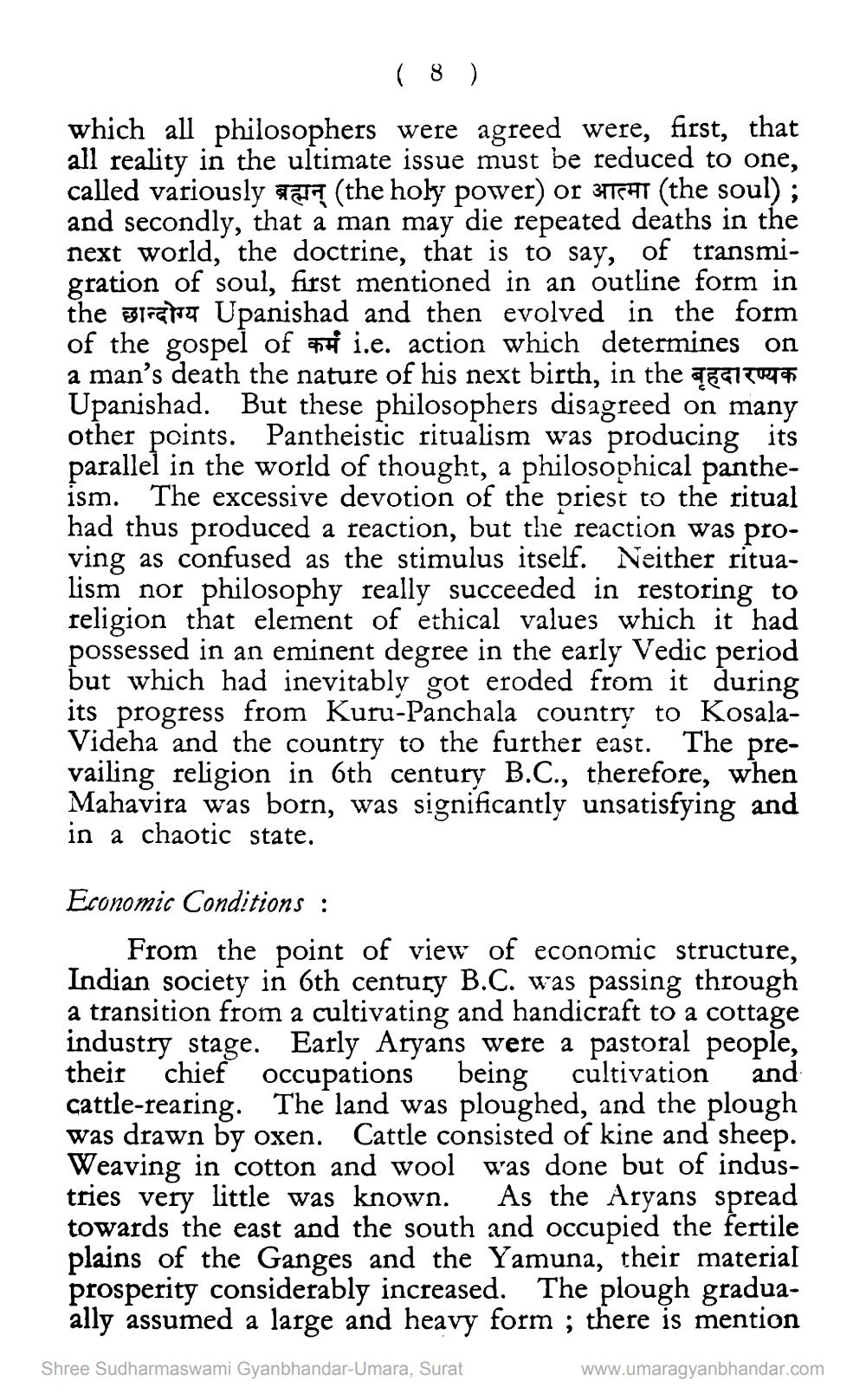________________
(8)
which all philosophers were agreed were, first, that all reality in the ultimate issue must be reduced to one, called variously the holy power) or 3CHT (the soul); and secondly, that a man may die repeated deaths in the next world, the doctrine, that is to say, of transmigration of soul, first mentioned in an outline form in the grate Upanishad and then evolved in the form of the gospel of 5 i.e. action which determines on a man's death the nature of his next birth, in the alguem Upanishad. But these philosophers disagreed on many other points. Pantheistic ritualism was producing its parallel in the world of thought, a philosophical pantheism. The excessive devotion of the priest to the ritual had thus produced a reaction, but the reaction was proving as confused as the stimulus itself. Neither ritualism nor philosophy really succeeded in restoring to religion that element of ethical values which it had possessed in an eminent degree in the early Vedic period but which had inevitably got eroded from it during its progress from Kuru-Panchala country to KosalaVideha and the country to the further east. The prevailing religion in 6th century B.C., therefore, when Mahavira was born, was significantly unsatisfying and in a chaotic state.
Economic Conditions :
From the point of view of economic structure, Indian society in 6th century B.C. was passing through a transition from a cultivating and handicraft to a cottage industry stage. Early Aryans were a pastoral people, their chief occupations being cultivation and cattle-rearing. The land was ploughed, and the plough was drawn by oxen. Cattle consisted of kine and sheep. Weaving in cotton and wool was done but of industries very little was known. As the Aryans spread towards the east and the south and occupied the fertile plains of the Ganges and the Yamuna, their material prosperity considerably increased. The plough graduaally assumed a large and heavy form ; there is mention
Shree Sudharmaswami Gyanbhandar-Umara, Surat
www.umaragyanbhandar.com




